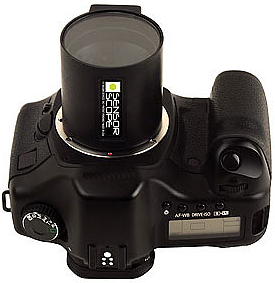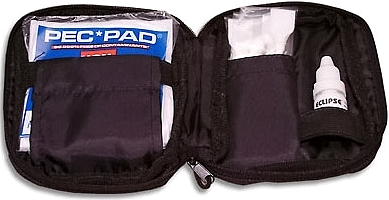Last Updated
- 17th December 2012
Sensor Dust
Most if not all 35mm 'full frame' digital sensor
cameras suffer from some dust on the sensor which is often put there by
changing lenses in dusty conditions and/or using zoom lenses that suck
dust in due to the inner lens barrel moving in and out! The various
camera dust removal systems work very well but every so often a wet
clean of the sensor is required. However, it is advisable to FIRST
gently blow out any possible hard dirt off the sensor and from inside the
chamber, to avoid scratches with any (later) wet clean.
Sensor Oil
Some 35mm 'full frame' digital sensor cameras are manufactured
with a liberal helping of oil in the mechanism
whereby as the shutter activates it can spread some of that oil on
the sensor. All the blowing in the world only spreads the oil
across the sensor so a wet clean of the
sensor is the only way to remove it and before it can seep into
the sensor whereby it may not be able to be cleaned?
Inspection of
Sensor
Many photographers use a
long focal length (100mm plus) lens
and shoot an image against a white background at a stopped down
aperture of f16 or f22. When they inspect the image at 100% on
the computer any dust and/or oil spots can be easily seen in the
image. Remember any dust/oil spots that you see at the bottom of
the image are actually on the top of the sensor and anything on
the right of the image is actually on the left of the sensor
(when looking at the sensor down through the camera chamber).
I use a
Delkin Sensor Scope which also
has it's own
light to check my sensor before and after any form of cleaning. Dust is
usually a neat spot whilst oil tends to have a running edge that
is not sharp. Believe it or not hairs actually get into the
chamber and on the sensor and they are very obviously seen as
hairs under the scope.
Blowing Dust of the Sensor
I use the
Delkin Sensor Scope
to check for
 dust
or oil on my camera sensor. In all cases, even if there is oil,
I perform a dust clean first -
it is advisable to FIRST
gently blow out any possible hard dirt of the sensor and inside the
chamber, to avoid scratches with the later wet clean.
dust
or oil on my camera sensor. In all cases, even if there is oil,
I perform a dust clean first -
it is advisable to FIRST
gently blow out any possible hard dirt of the sensor and inside the
chamber, to avoid scratches with the later wet clean.
I always I use a
Rocket Blower to clean out my dust
bucket, my 6 year old Canon 5D MK I DSLR camera, which has no dust
removal system. IMPORTANT - I always hard blow the Rocket several times away from
the camera to heat up the Rocket's rubber bulb and blow out any
condensation.
I then hold the camera, sensor facing downwards and I insert the
blower's red plastic snout across the chamber from a corner of one of
the narrow sides and about halfway to the sensor face but aimed at the
opposite corner short edge of the sensor and well away from it's surface
then gently squeeze the bulb several times to create a collection of air
that sweeps back across the sensor face and down the the sides of the
chamber. Surprisingly, I then very rarely have to wet clean the sensor
because the dust has been blown out -
I also use the
Delkin Sensor Scope to check my sensor before and after
using the
Rocket Blower.
WARNING - A high pressure jet of air and/or wet cleaning can
damage your sensor so be gentle and beware that if you damage a sensor it
may invalidate any warranty?
Wet Cleaning the Sensor

I use
Sensor Swabs Type 3 to wet clean my
FF digital sensor, with the camera sensor facing downwards to avoid any
overspill of fluid on the swab leaking in behind the sensor. I always
mount my camera on a heavy tripod to perform the wet cleaning.
I always use a clean swab, I remove only the plastic
covering, then add 2 drops of fluid on the tip to provide a reasonably
wet leading edge on the pad but not dripping.
I start at the left narrow
end of the sensor and I use one swab for a (tilt swab right) left to
right swipe then (tilt swab left) and right to left swipe - discard
swab.
It may take several swabs to clean the sensor, depending on how
dirty it is - I also use a
Delkin Sensor Scope to check my sensor before and after cleaning.
Swab Cleaning Diagram

WARNING - A high pressure jet of air and/or wet cleaning can
damage your sensor so be gentle and beware that if you damage a sensor it
may invalidate any warranty?

 dust
or oil on my camera sensor. In all cases, even if there is oil,
I perform a dust clean first -
dust
or oil on my camera sensor. In all cases, even if there is oil,
I perform a dust clean first - 
